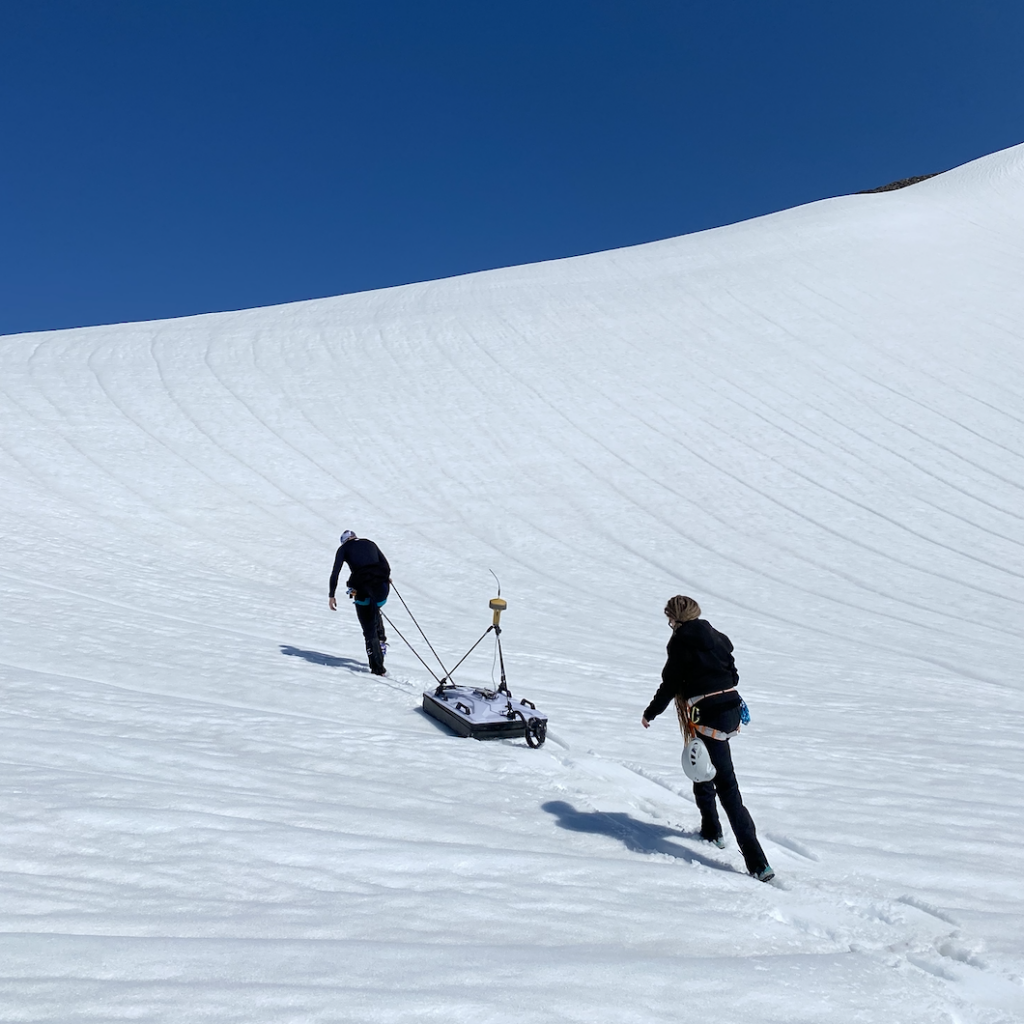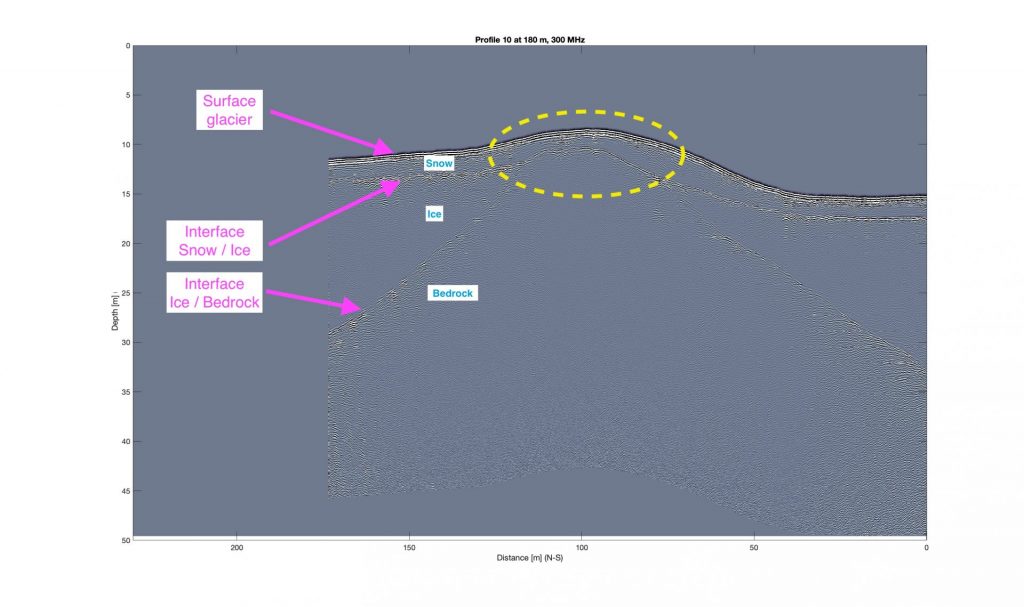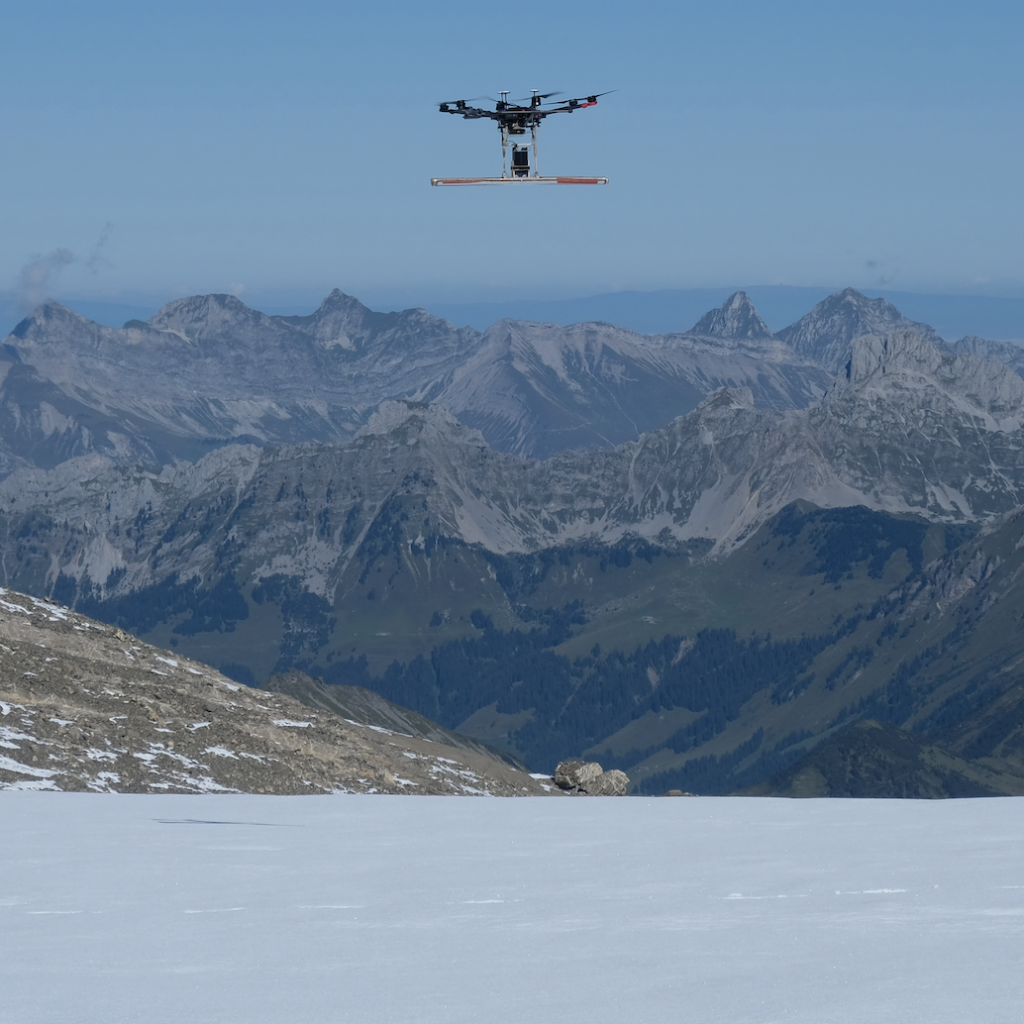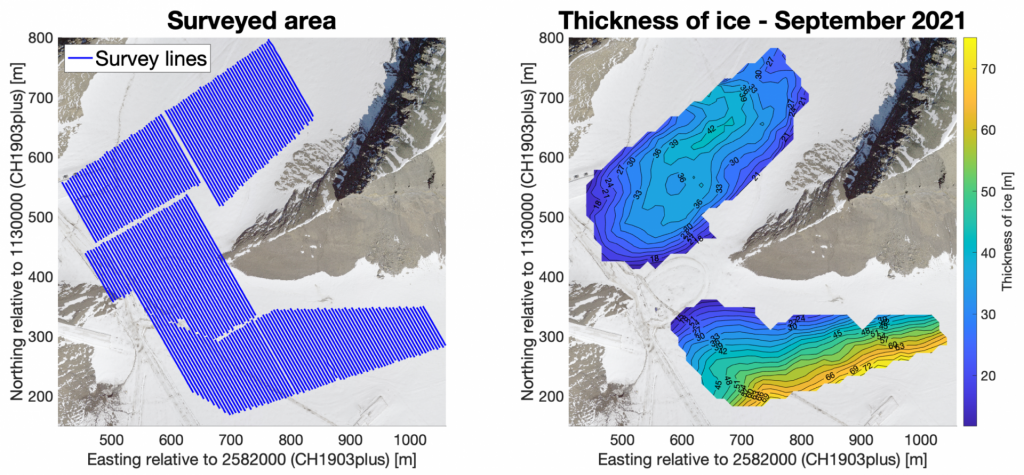The Tsanfleuron glacier is located in southwestern Switzerland at the border between the Vaud and Valais cantons. In collaboration with the ski resort Glacier 3000, exploiting the glacier since 2005, we visited the area in the summer 2021 with our under-development drone-based GPR system. Our objective was to test the system over an alpine glacier easily accessible, in order to improve it, while providing valuable data to the resort. Indeed, the Tsanfleuron glacier is connected to the Scex-Rouge glacier over the Tsanfleuron pass. The ice thickness at this location is known to be of only a few meters. A separation of the two glaciers at this location would therefore have important impacts for the ski ressort, that would then be completely dependant on the snow fall even in the winters.
We visited the area a first time in June 2021 with a pulka radar in order to get an idea about the ice thickness and plan as well as possible our future drone-based GPR measurements. In one full intense day of fieldwork, we recorded 13 profiles for a total of approximately 3 line-km of GPR data. The minimum ice thickness in the area was of roughly 3.5 m, which means that at the current rate of ice melt, the two glaciers might already be separated very soon.



We came back in September 2021 and acquired data with our first drone-based GPR prototype. The system was logically much more efficient with the collection of ~30 line-km of GPR data in less than three days of fieldworks. In regions were the ice is thinner than ~10 m, the interface between the ice and the bedrock is not visible on our dataset because of interaction between the radar and the drone and larger antenna ringing. On the north side of the pass, the bedrock topography shows a depression which might in a few tens of years become a lake. On the south side the ice is thicker. We estimate the precision in ice thickness of our results to be only beneath the meter, as our system was not yet equipped with a dGPS technology and the survey methodology was not optimised yet.

This experience was beneficial for the drone-based GPR system as it helped us to target what were at this stage the improvement paths. It seemed necessary to update our drone with a dGPS/RTK technology, and a few measures had to be taken in term of survey methodology. However, the system proved to be extremely more efficient and safe than the pulka radar, and the results were of sufficient quality to provide Glacier 3000 with valuable information. In the summer 2022, due to the extremely high temperatures of the season, the two glaciers finally got separated and the Tsanfleuron pass was visible for the first time since more than 2000 years.
